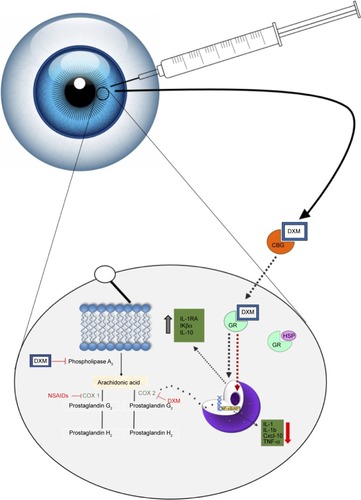Figures & data
Figure 1 A model of the mechanism of action upon administration of intraocular DXM.
Abbreviations: DXM, dexamethasone; CBG, cortisol-binding globulin; GR, glucocorticoid receptor; HSP, heat-shock protein; IL-1RA, interleukin-1 receptor antagonist; IL-10, interleukin 10; IL-1, interleukin-1; IL-1b, interleukin-1b; Cxcl-10, chemokine (C-X-C motif) ligand; TNF-α, tumor necrosis factor α; COX-1, cyclooxygenase 1; COX-2, cycloxygenase 2.

Table 1 A summary of the advantages and disadvantages of various routes of DXM delivery to control post-cataract surgery inflammation
Table 2 A summary of the visual acuity using intracameral DXM and topical steroids at a postoperative interval (~4–6 weeks). Only studies that quantitatively evaluated visual acuity using the logMAR scale were included
Table 3 A summary of evidence of all studies that have used intracameral DXM after cataract surgery
